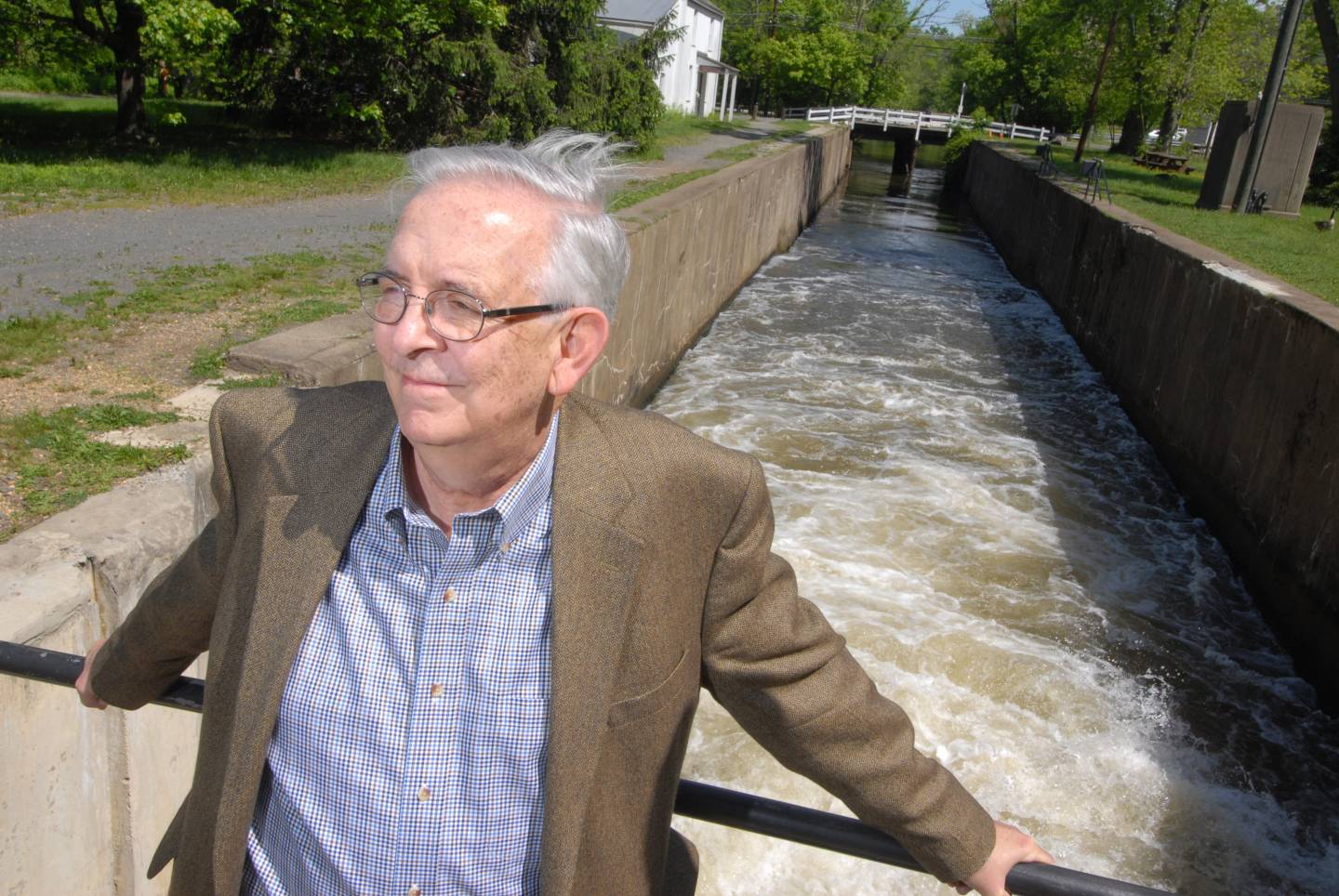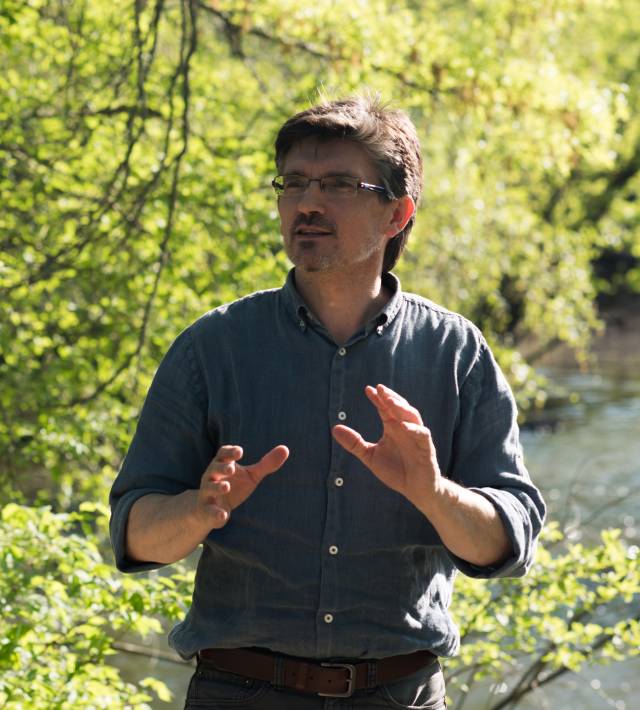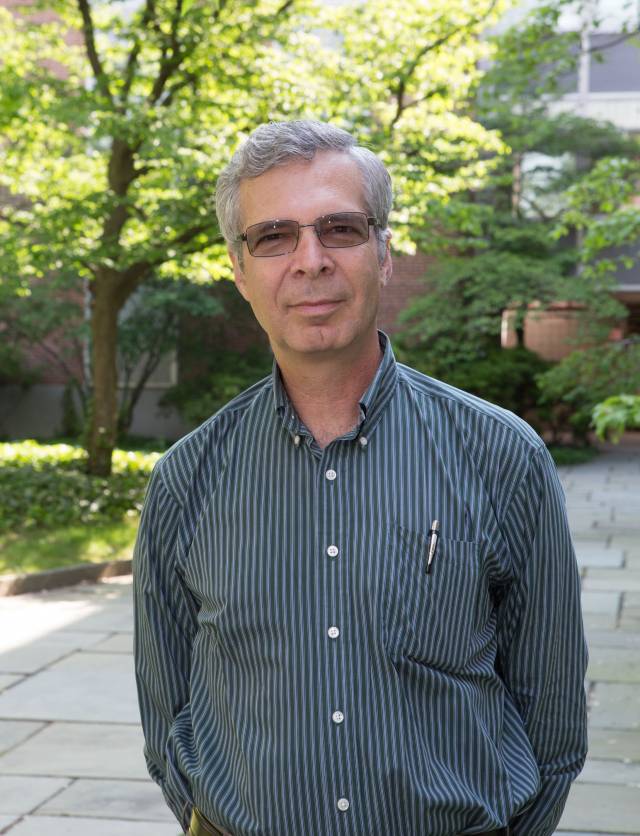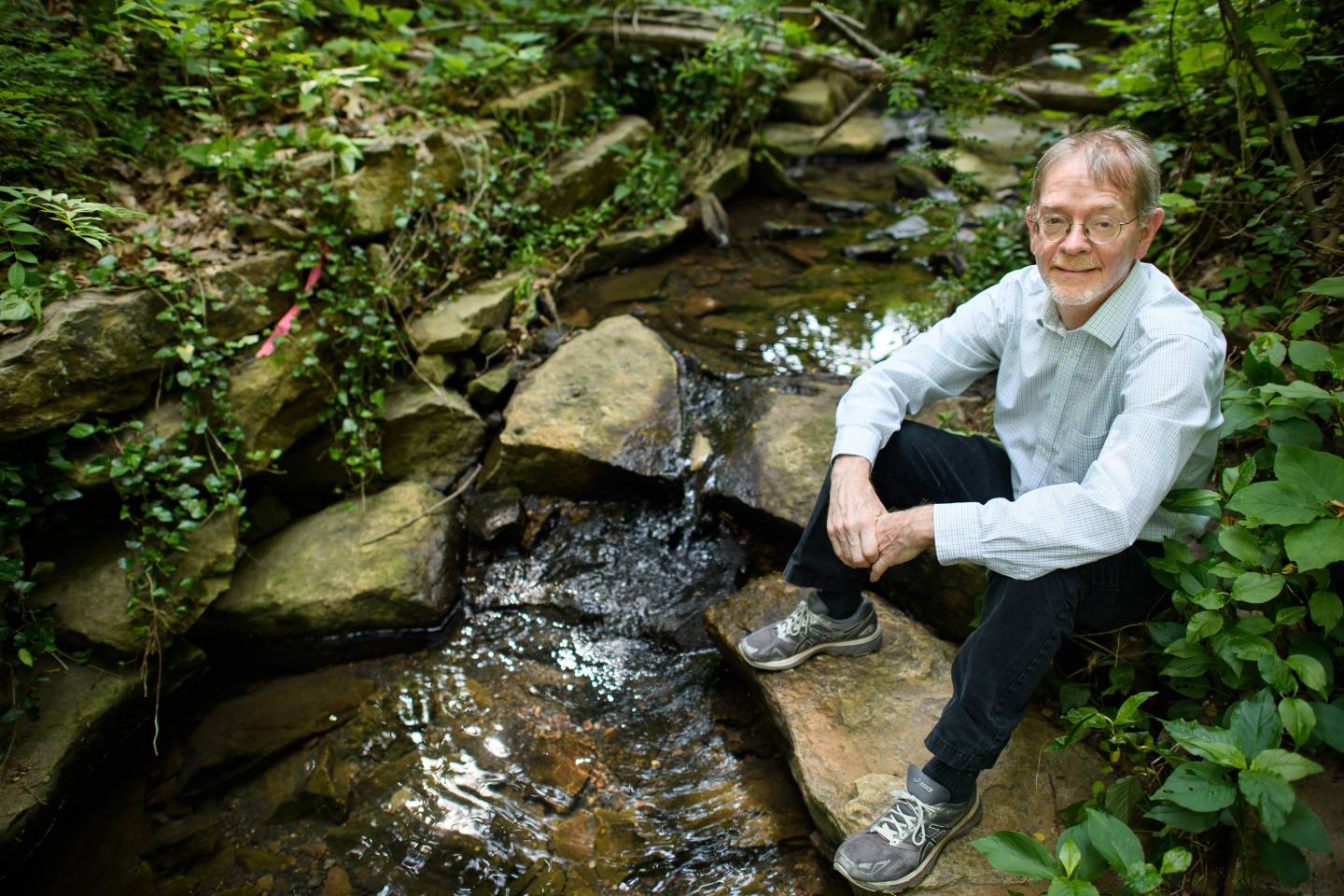Water is the most elemental ingredient of life; its regular availability is essential to our economies and to civilization itself. Yet billions of people yearly confront water-related stress, including devastating droughts, destructive flooding and toxic contamination. Ignacio Rodriguez-Iturbe has dedicated his career to understanding this critical resource so humanity can better manage it, and in his view, there is a remarkably capable teacher in our midst: plants.

Ignacio Rodriguez-Iturbe
"They don't know when the rain will arrive, and they don't know how much rain will come," he said. Yet plants are attuned to their environment and work within the ecosystem to make the most of what water there is. "That's the life of plants, and they survive."
Rodriguez-Iturbe, the James S. McDonnell Distinguished University Professor of Civil and Environmental Engineering, Emeritus, is among the founders of ecohydrology, a discipline that examines the roles of landscapes, plants and soil in the water cycle. A professor at Princeton for 17 years, in 2002 Rodriguez-Iturbe won the Stockholm Water Prize, known informally as the "Nobel Prize of water."
He is one of several Princeton faculty members who have tackled critical environmental problems involving water. Their tools and discoveries contribute to cleaning up watersheds and inform policies to plan for water scarcity and flooding around the globe.
Conservation, agriculture and public health
To understand how water moves through living systems, Rodriguez-Iturbe and his colleagues in engineering, geosciences and ecology and evolutionary biology developed mathematical approaches integrating rainfall data with information on geological features, soil moisture and vegetation.

Simon Levin
Rodriguez-Iturbe, now at Texas A&M University, continues to collaborate with Simon Levin, Princeton's James S. McDonnell Distinguished University Professor in Ecology and Evolutionary Biology. In 2019, they published an analysis of tree cluster patterns in African savannas, which have been challenging to explain in mathematical terms. The study explained the tree clusters' dependence on local soil moisture and developed a model to help conservation efforts that accounts for impacts of fires and wildlife on trees.
The work, combining water dynamics and ecology, is a good example of Princeton's approach, which begins with a wide view and narrows to detailed solutions.
"The beauty of the work that's been done here in ecohydrology is that it takes the random nature of rainfall and integrates it into a model where you can actually find solutions in a way that is absolutely elegant in terms of its mathematics, and still is driven by really practical questions," said Michael Celia, a professor of civil and environmental engineering and director of the Princeton Environmental Institute who has also collaborated with Rodriguez-Iturbe.

Amilcare Porporato
Another collaborator, Amilcare Porporato, worked with Rodriguez-Iturbe as a visiting scholar at Princeton from 1999 to 2001 and is now a professor of civil and environmental engineering. In work supported by Princeton's Carbon Mitigation Initiative, Porporato works with colleagues in engineering and geosciences to investigate how plants and soils sequester carbon. In addition to improving soil carbon information in climate models, their results could guide agricultural and conservation strategies to help curb climate change. He also develops predictive frameworks that integrate rainfall fluctuations with agricultural outputs and patterns of disease, including a collaborative study on dengue fever outbreaks supported by the Princeton Environmental Institute's Climate Change and Infectious Disease initiative.
Other Princeton leaders in the field include Peter Jaffé - the William L. Knapp '47 Professor of Civil Engineering, who has developed methods for cleaning intractable pollutants from groundwater and wetlands - and professor emeritus Eric Wood. Wood pioneered computational models to track the impacts of climate change on drought and flood patterns, which earned him the 2017 Robert E. Horton Medal for outstanding contributions to hydrology from the American Geophysical Union.
Mapping drought risks

Peter Jaffé
Enabling reliable, sustainable agriculture under water scarcity has long been a priority for Wood, who joined Princeton's faculty in 1976 and continues to work as a senior scholar in civil and environmental engineering. He helped establish the use of satellite data in hydrology and improved the representation of the water cycle in climate models, including the energy implications of water interacting with different land types.
"The work that Eric pioneered is called the assimilation approach, which is basically bringing many streams of useful but independent data together in a consistent fashion. Once you have that, then you can start to understand how the water cycle varies, you can do prediction of droughts and floods, you can look at future climate impacts," said Justin Sheffield, who has worked closely with Wood for two decades, first as a research scholar at Princeton and now as a professor at the University of Southampton in the U.K.

Eric Wood
In 2008, Wood, Sheffield and colleagues launched the African Flood and Drought Monitor, developed with support from the United Nations Educational, Scientific and Cultural Organization (UNESCO). Since much of sub-Saharan Africa's farming depends on rain, drought forecasts can provide critical information for farmers and policymakers. The monitor complements ground-based information with satellite data and hydrological modeling, and uses state-of-the-art prediction tools to generate seasonal forecasts.
Resilience to future floods
Better data sets and predictive tools have also deepened understanding of extreme storms and flooding, a major focus for James Smith, the William and Edna Macaleer Professor of Engineering and Applied Science, and Ning Lin, associate professor of civil and environmental engineering.
Smith, who joined Princeton in 1990, helped establish a radar network that has since become a principal tool for U.S. weather forecasting and measuring rainfall.
Thanks to this groundwork, Smith was well-positioned for a watershed study on a catastrophic flood along the Rapidan River in Virginia's Blue Ridge Mountains, following a storm that dumped more than 25 inches of rain in 6 hours on June 27, 1995.

James Smith
Such extreme events, the study showed, reveal the limits of the theory that forests can prevent flooding. Smith's group has since extended this research to examine how complex terrain can create hot spots of extreme rainfall - including the influences of urban infrastructure on local climate, rainfall and flooding.
In collaboration with Smith and other colleagues, Ning Lin's work aims to make coastal communities more resilient to storms and flooding.
"Our research combines the state of the science - our current understanding of hurricanes, the climate system, infrastructure systems and the coastal environment - to project the impact of climate change on hurricanes and risks to coastal areas," said Lin. "Then we link that to the development of mitigation strategies, both in engineering and in policy and economic perspectives."
In 2019, Lin and colleagues published detailed projections of hurricane flood hazards for counties along the U.S. Atlantic and Gulf coasts at the end of this century, showing that current 100-year floods will likely occur every 30 years. This type of high-resolution risk mapping is critical to making informed policies, said Lin.

Ning Lin
Lin is one of several Princeton researchers involved in Structures of Coastal Resilience, a project that combines flood predictions with infrastructure improvements such as storm surge barriers that double as parks. Along with Guy Nordenson, professor of architecture and affiliated member of the Department of Civil and Environmental Engineering, and Michael Oppenheimer, the Albert G. Milbank Professor of Geosciences and International Affairs and the Princeton Environmental Institute, Lin has also served on the New York City Panel on Climate Change. The panel is working to make New York a leader in advancing flexible solutions to coastal protection based on scientific projections of future hazards.
In the field of ecohydrology, Rodriguez-Iturbe is also looking to coastal areas as a new frontier - he's interested in the complex dynamics of waves, dunes and vegetation. "Coastal ecosystems are extremely important for humankind now and in the future, and we need to know more about the core science of how these ecosystems respond under different conditions," he said.






